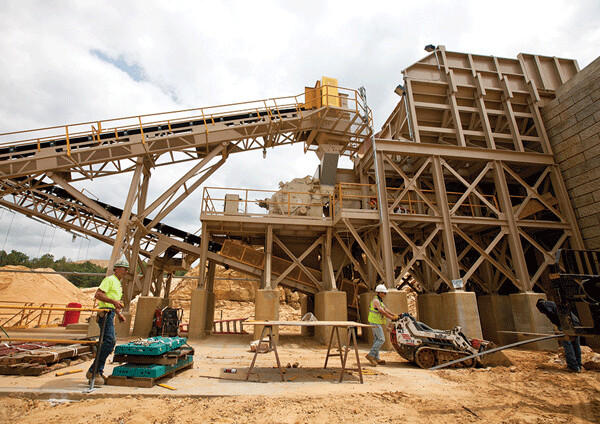Mining Jobs Mirage

Last week I wrote about repealing Wisconsin’s mining “prove it” law. I made reference to studies that show mining does not improve local economies. This week I provide the documentation for those assertions.
Mining, like any business activity, can temporarily increase employment and thus help the local economy. But many studies say most mining does not build SUSTAINED PROSPERTY for local communities. Not by itself. This should be apparent if you think about it. Appalachia, with an economy dominated by coal mines, is famous for generational poverty. Many mining regions in the West and Upper Midwest exhibit similar boom and bust, high unemployment rates, and persistent poverty.
Professor T.M. Powers of the University of Montana has done several studies that show prosperity often fails to materialize even when mines are fully operational and despite high mining wages. He says, “Across the United States, mining communities instead are noted for high levels of unemployment, slow rates of growth of income and employment, high poverty rates, and stagnant or declining populations” (Source: The Economic Anomaly of Mining- Great Wealth, High Wages, Declining Communities. A Decision-Makers Field Guide, T.M. Powers 2005).
A study of coal mining in West Virginia says, “Policy makers generally see resource extraction as a boon for local economies and citizens. Numerous studies, however, have shown negative socioeconomic outcomes in extractive communities, supporting the notion that resources can be more of a curse than a blessing.” (Source: Addictive Economies and Coal Dependency, Methods of Extraction and Socioeconomic Outcomes in West Virginia, 1997-2009, Robert Todd Perdue,Gregory Pavela 2012).
A study by the Sonoran Institute, a western non-profit think tank, says, “the more diverse an economy, the faster it will grow. The more specialized, the slower it will grow, especially if the specialization is in mining, oil and gas development, logging, wood products manufacturing, or other resource extractive sectors” (Source: Prosperity in the 21st Century West: The Role of Protected Public Lands, By Ray Rasker, Ben Alexander, Jeff van den Noort, and Rebecca Carter, 2004). It also found that areas with public lands, especially protected public land (National Parks, wilderness areas, etc.) had faster, more diverse economic growth.
Closer to home fracking sand mining show the same patterns. A 2013 study concluded, “The economic impact of frack-sand production in west central Wisconsin is likely to be quite small. The jobs associated with it will make up only a fraction of one percent of total employment.”
It summarized by saying, “The promise that mining can lay the basis for prosperous, vital economies has not usually been fulfilled. Wisconsin has had a long history of mining that tells the same historical story found in other mining districts across the United States and around the world. Mining has rarely laid the basis for sustained prosperity. Often, as in Appalachia or the Ozarks or the Upper Peninsula of Michigan or the Iron Range of Minnesota, mining has been synonymous with economic depression, high rates of unemployment and poverty, or simply “ghost towns”” (The Economic Benefits and Costs of Frac-Sand Mining in West Central Wisconsin, By Thomas Michael Power, Ph.D. and Donovan S. Power, MS Power Consulting, Inc).
As I reported last week the Flambeau Mine in Ladysmith Wisconsin is supposedly a model of successful mining. But rural economist Tim Tynan in a1997 report concluded that the mine “had a negligible impact on the economy of Ladysmith.” He compared the statistics of Medford and Ladysmith (similar size towns in adjacent counties). He found similar unemployment trends despite the mine. The average wage rates in Medford were higher despite the good wages paid by mining company. Medford spent roughly the same amount of tax revenue as Ladysmith but on different initiatives. Medford spent much more on schools and residential amenities (roads, sidewalks, parks, etc). Ladysmith sought business growth and incurred more public debt. But Medford did better in terms of economic prosperity over the seven years between 1989 to1996.
Mr. Tynan concluded “Planning which does not enhance residential life, and only attempts to grow economically, may lose residents and create enormous debts, while doing little to attract a diverse industrial base.” Trying to attract big companies “creates false hopes for the residents in a poor community.” Communities are better off improving “the lives of the residents within the community, rather than spending more time and money attempting to attract those from outside the city.” When communities attract residents “businesses will soon follow” and those businesses “often enhance, rather than detract from, the reason people live there in the first place.” (Source: When Mines Enter Minds: An Investigation of Ladysmith and Medford, Wisconsin and the Economic Impact of the Flambeau Mine).
Mr. Tynan supports what I have said in past articles. Real prosperity occurs when you invest in people and in local communities. This builds communities that are good places to live and promotes diverse local businesses. Investments in people are done primarily by government . In rural areas like northern Wisconsin and Minnesota, government is the backbone of the economy. Mining, farming, logging, and tourism all contribute but without the foundation provided by government (and middle class government jobs) many communities would be severely stressed. Some would be ghost towns. It is the teachers, county employees, highway workers, state patrol officers, DNR staff, federal forest service people, etc. that fuel local economies. These are the local folks buying houses, cars, going to restaurants, keeping retail stores alive, using local small business services, and paying the local property taxes.
Instead of recognizing these facts and supporting necessary government services and infrastructure the Republican wrecking crew in Madison is doing exactly the opposite. They are busy cutting budgets, under funding education, laying off public servants, and reducing revenue sharing that supports local infrastructure. At the same time they are giving away the farm to out-of-state mega-corps to “create” jobs. Instead of the undramatic work of building local communities they chase sensational “deals” with highly questionable prospects for success.
Hoping that mining will provide good paying jobs and thus boost the the local economy is not a good strategy. This is not a matter of being anti-mining. It is not an us-vs-them, environment vs jobs debate. It is simply a recognition of the historical patterns. Too often the reality doesn’t match the hype.
